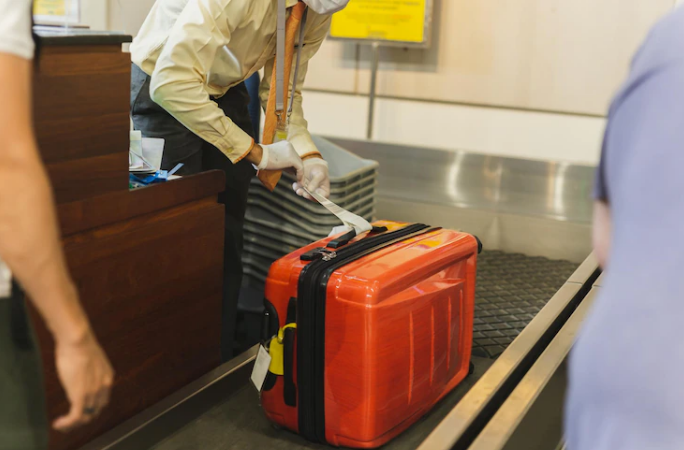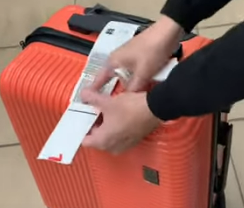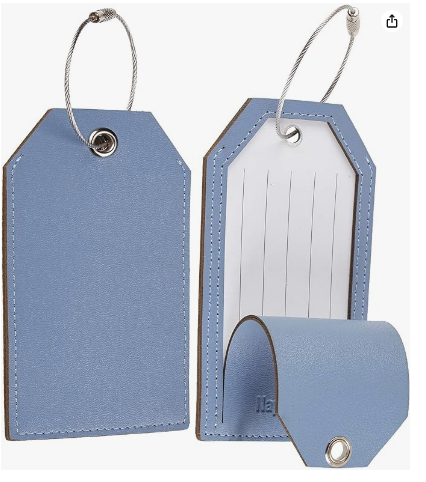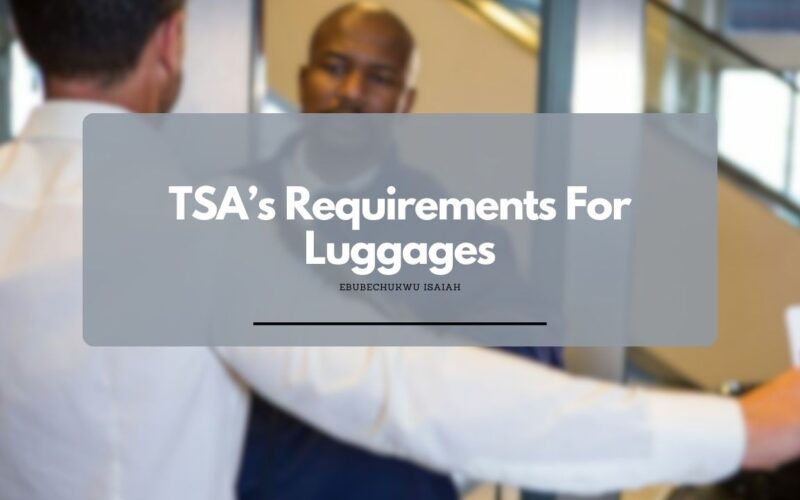As an Amazon Associate, I earn a small commission from qualifying purchases. Learn more about this.
Have you ever wondered what you need to put on your luggage tags when flying?
As someone who travels often, I know how confusing it can be at first.
Let’s break down the TSA’s luggage tag requirements together. It’s simpler than you might think, and I’ll guide you through each step
Why Luggage Tags Matter
First, think of luggage tags as your suitcase’s ID.
Just like we need identification, our bags do too, especially in the world of air travel where thousands of bags are moving around.
It’s important that we also advise having tags in carry-on (s).

These tags speak for your bags when you can’t. They tell the airline staff—and anyone else who might find your bag—exactly who it belongs to and how to get it back to you.
In my travels, I’ve seen countless bags on the carousel, indistinguishable from each other. Imagine your bag gets lost in that sea of luggage. Who is to be blamed, when you didn’t properly tag your bag?
A tag with your name and contact information becomes a beacon, guiding your bag back to you. It’s not just about the airlines either.
If you accidentally leave your bag in the airport lounge or a taxi, a good Samaritan can use that tag to reach out to you.
Another important aspect is the peace of mind it brings.
Knowing that your bag has your contact information can ease some of the stress of travel. It’s like leaving a breadcrumb trail back to you, should your luggage take an unexpected detour.
Moreover, in the unfortunate event of mishandled luggage, a well-labeled bag can significantly speed up the recovery process.
Airlines and airports handle a massive number of lost luggage cases annually.
According to a report by SITA, the percentage of lost and stolen bags increased to 7% in 2023
A clear and accurate luggage tag can make your bag stand out in the lost-and-found process, ensuring a quicker reunion.
The TSA luggage Tag Requirements Overview
Now, here’s something not everyone knows: the TSA doesn’t mandate luggage tags for domestic flights, but they’re still important for the reasons we’ve discussed earlier.
For international travel, however, some countries do require them, so it’s always better to be safe than sorry.
It’s important to note that for a flight that requires them, you’ll be given one. This is something that’s normally shared over the counter. We talked properly about this in a previous article.

Now, aside from the airport tags airlines give, you’re not mandated to bring personalized tags nor are you restricted as well.
TSA is actually neutral about the whole thing.
But here are 2 main things every good luggage tag should satisfy:
Firstly, the most important thing on your luggage tag is your name. It sounds obvious, right?
But you’d be surprised how many people overlook this.
Your full name should be clearly written or printed on the tag. This is the primary way the TSA and airline staff can identify who the bag belongs to.
Your contact information can then follow suit, next.
This should include your phone number and email address.
Some people prefer not to put their home address for privacy reasons, which is understandable.
Personally, I usually stick to my phone number and email, ensuring I can be reached quickly if my bag is misplaced.
Choosing the Right Luggage Tag
Picking the right luggage tag might not seem like a big deal at first, but it’s actually an important part of your travel prep.
For me, this is what I use:

It cost around $3 for two pieces and is also available in a few different minimalistic color.
Now, regardless, let me share some tips on what to look for when choosing a luggage tag that won’t let you down.
First and foremost, durability is key.
Your luggage tag needs to withstand being tossed around, loaded and unloaded, and everything else that comes with travel.
I’ve learned the hard way that flimsy tags just don’t cut it. Look for tags made of sturdy materials like leather, metal, or high-quality plastic.
Not a cheap quality plastic with paper input that can easily be damaged in the case of a spontaneous bad weather condition.
Then, there’s the question of design.
While it’s tempting to go for the most stylish tag, functionality should be your top priority.
Your tag should have a clear plastic window or a secure flap to protect your personal information from the elements and prying eyes. Also, the font should be easy to read.
I’ve seen too many tags with fancy scripts that are practically illegible.
The attachment mechanism is another crucial aspect.
The best tags have a strong loop or strap that can securely fasten to your luggage handle.
Avoid tags with simple or flimsy clips; they can easily break or get detached. I prefer a reinforced steel cable or a sturdy leather strap for peace of mind.
Size matters too. Your tag should be big enough to hold all your essential information but not so large that it becomes cumbersome or gets caught on something.
Personalization is also an option. Many people, including myself, find that a customized tag with a unique color or pattern makes it easier to spot your luggage on the carousel. This can be a real time-saver at baggage claim.







